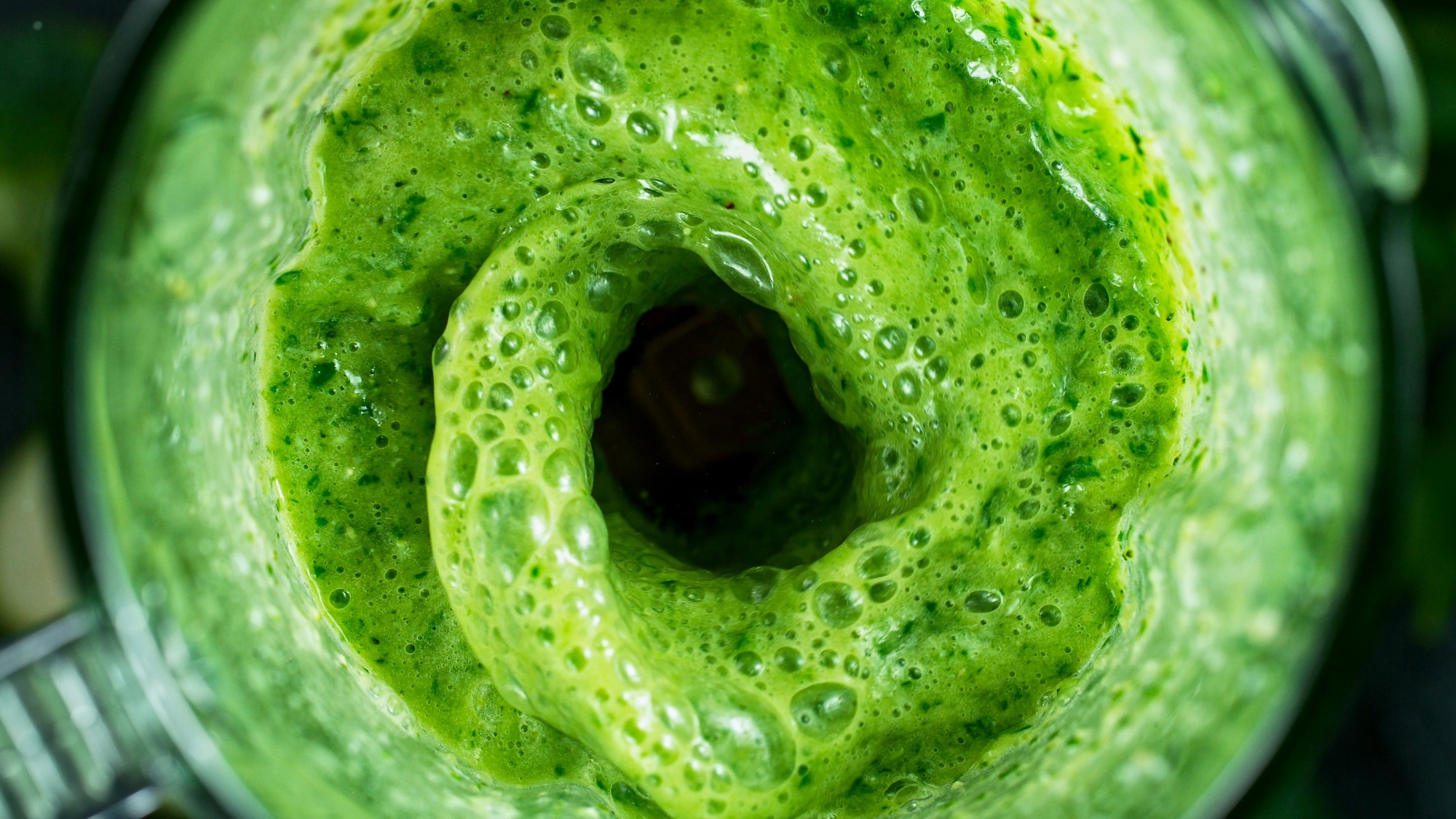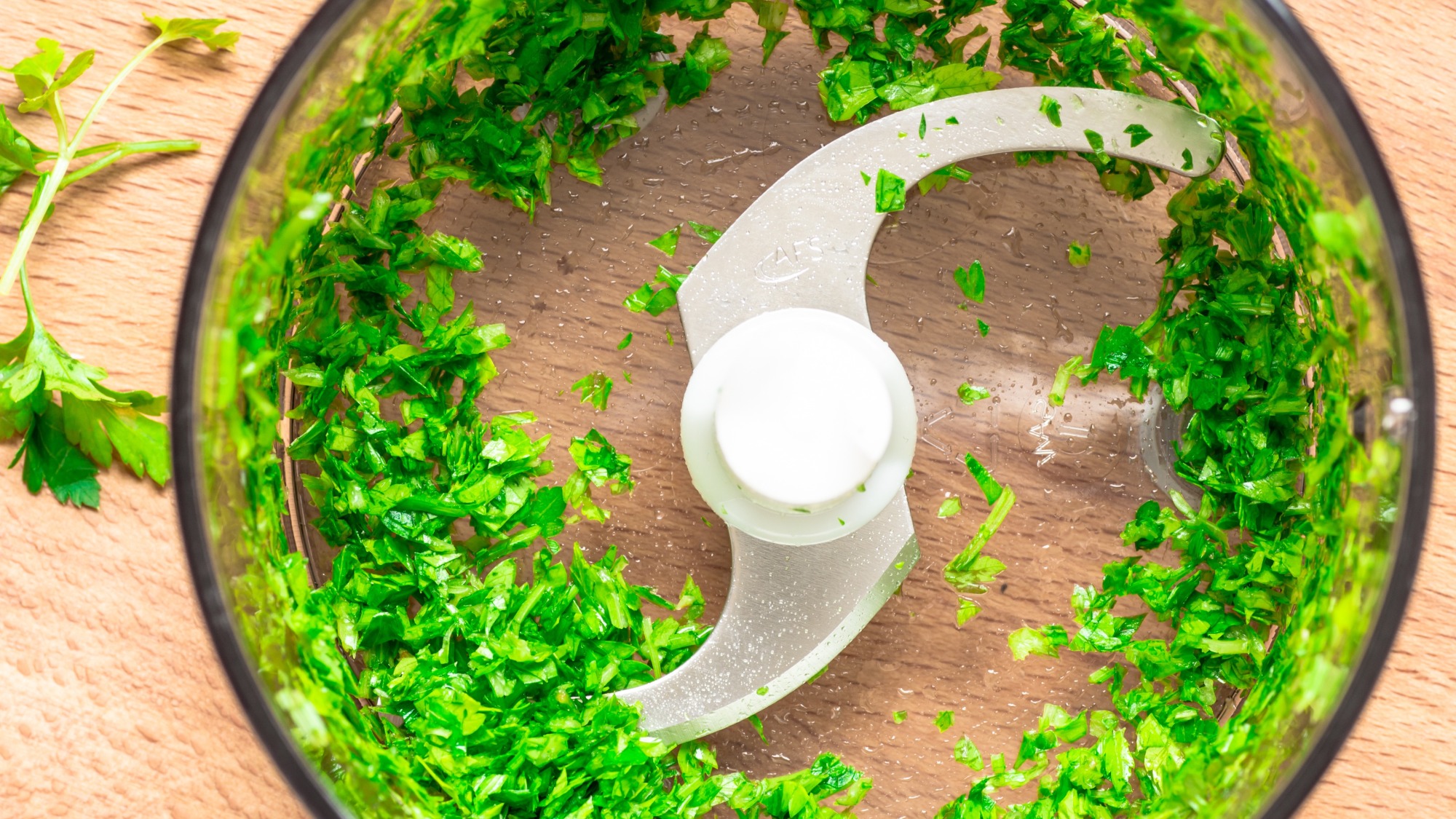- USDT(TRC-20)
- $0.0
Your kitchen should have the right tools. Welcome to A Guide to Gearing Up Your Kitchen, a series where I help you outfit the space with all the small appliances you need (and ditch the ones you don’t).
I’d be lying if I denied that a blender and food processor kind of look interchangeable—there’s blades, containers, lids with chutes, and a big base with buttons. While it might seem like having one is as good as having the other, they don’t exactly do the same thing. Yes, they both cut food (fast) but the shape of the container and blades makes them experts at different tasks. Once you know what they do best, you can use both of these appliances to make your work in the kitchen much easier.
Watch this video to hear me explain:

Credit: Lukas Gojda / Shutterstock.com
The blender and food processor both have powerful engines that spin their respective blades at incredible speeds—way faster than a human could move—and that’s what makes them convenient. Where they differ is in their shape, and this changes everything.
A blender has a tall container that tapers at the base where the blades live. There are two sets of small blades; two tilt (or bend) up and two down. The gently sloping walls of the container and the opposing blade angles all contribute to creating a vortex out of whatever you put inside. The blades spin and create suction at the base. Slowly, material spins down from the top of the container to get blended at the bottom, and then it climbs back up the vortex to repeat the cycle until you stop the machine.
A blender’s wee blades are only at the base, so the design counts on the vortex to bring food on that slow descent to the blades. This makes it ideal for blending liquids or items that have a high water content. Anything dry or thick won’t move down into the blades, so you’ll end up with over-processed material at the bottom while the top remains untouched.
Use your blender for:

Credit: Photosiber / Shutterstock.com
A food processor doesn’t create the same food whirlpools like a blender, but that’s not a bad thing. You don’t always want purée—sometimes you want a chunky salsa or roughly chopped onions. The blender doesn’t really have a choice but to overdo it, but a food processor puts you in control.
The food processor’s container is short and wide compared to the blender’s tall, slender one. The blades are mostly straight (maybe angled but not bent like some blender blades), have a longer wingspan that reaches almost the entire diameter of the container, and, depending on the model, there may be two or four. When you activate the motor, the food processor’s blades spin and chop. That’s pretty much the long and short of it. What’s important is that since the blades are longer and more spread out, they will reach more of the food in the container at one time, allowing you to achieve evenly cut pieces. Compare this to a blender where the blades can only access the very base of the container at one time.
The food processor is more like your sous chef. It’s an expert at chopping ingredients fast, helping you to get to the cooking part faster. Plus, it’s not only equipped for chopping. Food processors come with attachments (different brands can offer more options), so you can slice rounds of carrots and potatoes, switch to the shredder, and easily take down a block of cheddar for your casserole. Read here for more tips on buying the best food processor.
Keep in mind that a food processor can absolutely smooth-out your chunky soups, but the purée won’t have the same velvety results that a blender will give you.
Use your food processor for:
Once you get the hang of it, you’ll be able to choose the right appliance for any job, whether it's making whipped cream, the perfect smoothie, or prepping your alfredo potatoes au gratin this week.
Full story here:
I’d be lying if I denied that a blender and food processor kind of look interchangeable—there’s blades, containers, lids with chutes, and a big base with buttons. While it might seem like having one is as good as having the other, they don’t exactly do the same thing. Yes, they both cut food (fast) but the shape of the container and blades makes them experts at different tasks. Once you know what they do best, you can use both of these appliances to make your work in the kitchen much easier.
Watch this video to hear me explain:
The blender vortex

Credit: Lukas Gojda / Shutterstock.com
The blender and food processor both have powerful engines that spin their respective blades at incredible speeds—way faster than a human could move—and that’s what makes them convenient. Where they differ is in their shape, and this changes everything.
A blender has a tall container that tapers at the base where the blades live. There are two sets of small blades; two tilt (or bend) up and two down. The gently sloping walls of the container and the opposing blade angles all contribute to creating a vortex out of whatever you put inside. The blades spin and create suction at the base. Slowly, material spins down from the top of the container to get blended at the bottom, and then it climbs back up the vortex to repeat the cycle until you stop the machine.
Highly-rated blenders to consider:
When to use a blender
A blender’s wee blades are only at the base, so the design counts on the vortex to bring food on that slow descent to the blades. This makes it ideal for blending liquids or items that have a high water content. Anything dry or thick won’t move down into the blades, so you’ll end up with over-processed material at the bottom while the top remains untouched.
Use your blender for:
Finely puréed soups
Super smooth baby food
Blending smoothies
Whipping-up salad dressings
Making stable emulsions like hollandaise sauce or mayonnaise
The food processor chops evenly

Credit: Photosiber / Shutterstock.com
A food processor doesn’t create the same food whirlpools like a blender, but that’s not a bad thing. You don’t always want purée—sometimes you want a chunky salsa or roughly chopped onions. The blender doesn’t really have a choice but to overdo it, but a food processor puts you in control.
The food processor’s container is short and wide compared to the blender’s tall, slender one. The blades are mostly straight (maybe angled but not bent like some blender blades), have a longer wingspan that reaches almost the entire diameter of the container, and, depending on the model, there may be two or four. When you activate the motor, the food processor’s blades spin and chop. That’s pretty much the long and short of it. What’s important is that since the blades are longer and more spread out, they will reach more of the food in the container at one time, allowing you to achieve evenly cut pieces. Compare this to a blender where the blades can only access the very base of the container at one time.
Highly-rated food processors to consider:
Ninja Professional 9-cup Food Processor
Breville 16-cup Sous Chef Pro
Hamilton Beach 12-cup Stack and Snap
When to use a food processor
The food processor is more like your sous chef. It’s an expert at chopping ingredients fast, helping you to get to the cooking part faster. Plus, it’s not only equipped for chopping. Food processors come with attachments (different brands can offer more options), so you can slice rounds of carrots and potatoes, switch to the shredder, and easily take down a block of cheddar for your casserole. Read here for more tips on buying the best food processor.
Keep in mind that a food processor can absolutely smooth-out your chunky soups, but the purée won’t have the same velvety results that a blender will give you.
Use your food processor for:
Chopping ingredients, from coarse to super fine
Slicing rounds
Peeling vegetables
Shredding ingredients
Mixing dough
Blending puddings, sauces, dips, or dressings
Making stable emulsions like hollandaise sauce or mayonnaise
Making nut butters
Once you get the hang of it, you’ll be able to choose the right appliance for any job, whether it's making whipped cream, the perfect smoothie, or prepping your alfredo potatoes au gratin this week.
Full story here:


